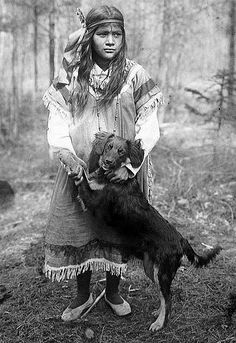
Overview of Native American Indian Dogs
History and Origins
The rich heritage of Native American Indian Dogs (NAIDs) begins thousands of years ago, tracing back to the first peoples who migrated to North America via the Bering Land Bridge. These early dogs, often referred to as Plains Dogs, were not only companions but also essential working animals for hunting, hauling, and guarding. Genetic studies reveal that these canines have a unique genetic signature: a lineage distinct from modern breeds, showcasing their ancient origins.
Remarkably, archaeological findings in sites such as Danger Cave support these assertions, with dog remains dated back roughly 9,400 years, marking them as some of the oldest domesticated dogs in the Americas.
Unique Characteristics
Native American Indian Dogs are known for their striking appearance and adaptability. Some of their unique characteristics include:
- Medium Build: Typically medium-sized, they are both strong and agile.
- Distinctive Coat: Their coats vary from short to medium, featuring natural shades that blend beautifully with their environment.
- Expressive Features: Pointy ears and bright, almond-shaped eyes add to their allure.
- Versatile Abilities: Able to excel in tasks ranging from herding to hunting, they are a multifaceted breed.
An encounter with a local NAID breeds a sense of nostalgia, highlighting the ancient bond between humans and these remarkable dogs. Their history truly reflects the enduring legacy of Native American culture.
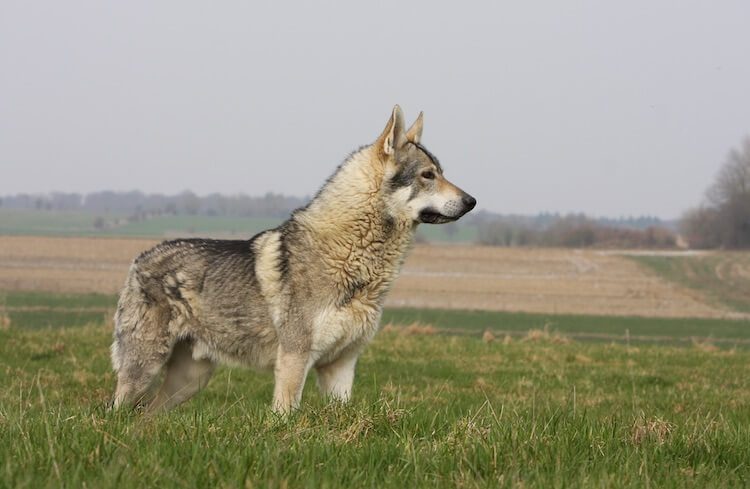
Varieties of Native American Indian Dogs
Traditional Breeds
The traditional breeds of Native American Indian Dogs (NAIDs) reflect their ancient roots and the vital roles they played within various tribes. Historically, these dogs were bred by Plains Indians, showcasing a distinct genetic lineage not found in modern breeds.
Some key characteristics of traditional NAIDs include:
- Diverse Sizes: They varied from medium-sized dogs akin to coyotes to smaller breeds resembling foxes.
- Purposeful Adaptations: Bred for diverse tasks such as hunting, herding, and protection, they were essential to the daily lives of many Native American tribes.
Personal stories shared among dog lovers often include travel experiences where individuals bond with their NAIDs while exploring vast landscapes. These stories serve as a testament to their resilience and companionship.
Modern Interpretations
Efforts to recreate the Native American Indian Dog began in the 1980s. Breeders crossbred Alaskan Malamutes, Siberian Huskies, and wolf lineage to achieve a likeness to the original Plains Dogs. This modern interpretation aims to honor the legacy while ensuring they thrive in contemporary settings.
Today’s NAIDs can be characterized by:
- Striking Appearances: They possess beautiful coats and expressive features reminiscent of their ancestors.
- Versatility: While traditional roles may evolve, they continue to be cherished as loyal companions and working dogs.
The ongoing journey to revive these breeds connects enthusiasts to the deep history behind these remarkable dogs, reminding us of their importance across time.
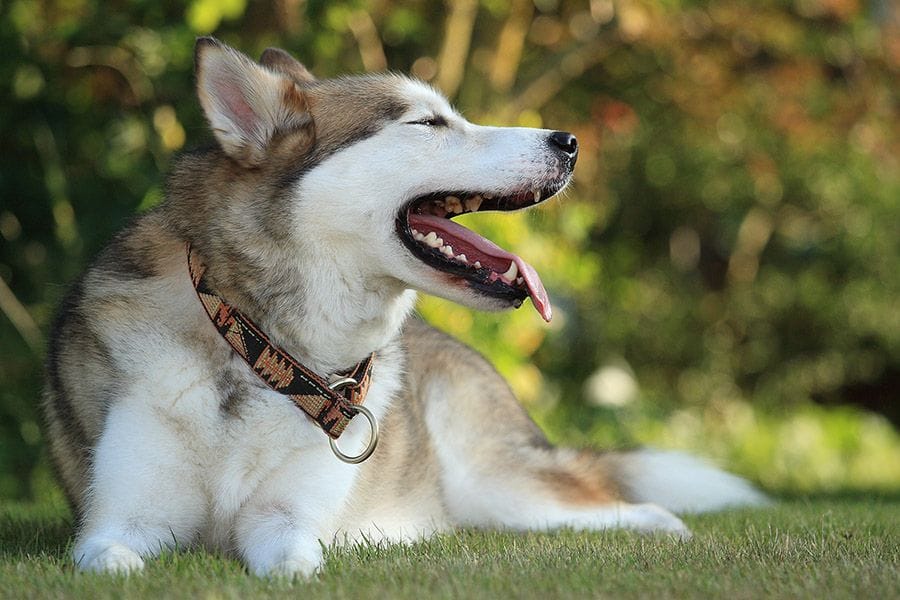
Cultural Significance
Role in Native American Tribes
Dogs have played an essential role in the lives of Native American tribes for centuries, shaping their history, culture, and community dynamics. Often regarded as loyal companions, these animals were indispensable in an array of daily activities.
Key functions included:
- Hunters and Helpers: Dogs assisted in tracking and retrieving game, proving to be effective partners for hunters.
- Protectors: Serving as guardians, they watched over camps, ensuring the safety of families and livestock from potential threats.
- Transportation Assistants: Before the introduction of horses, dogs carried loads and pulled sleds, making travel more efficient.
Many Native American stories revolve around the courage and loyalty of dogs, such as tales shared by elders during community gatherings, fostering a sense of unity and respect for these animals.
Symbolism and Myths
The bond between Native Americans and dogs is often depicted in myths and legends, illustrating deep spiritual connections. One charming legend tells how dogs willingly chose to accompany humans, proving their loyalty from the start.
- Sacred Guardians: Dogs were seen as spiritual guides, assisting during rituals to bridge the human and spirit worlds.
- Cultural Icons: In some tribes, dogs were regarded as symbols of loyalty and sacrifice, such as the myth where a dog gave up ten of its years to prolong human life.
This rich tapestry of stories and roles reflects the enduring legacy of dogs within Native American cultures, showcasing their invaluable companionship and cultural significance.
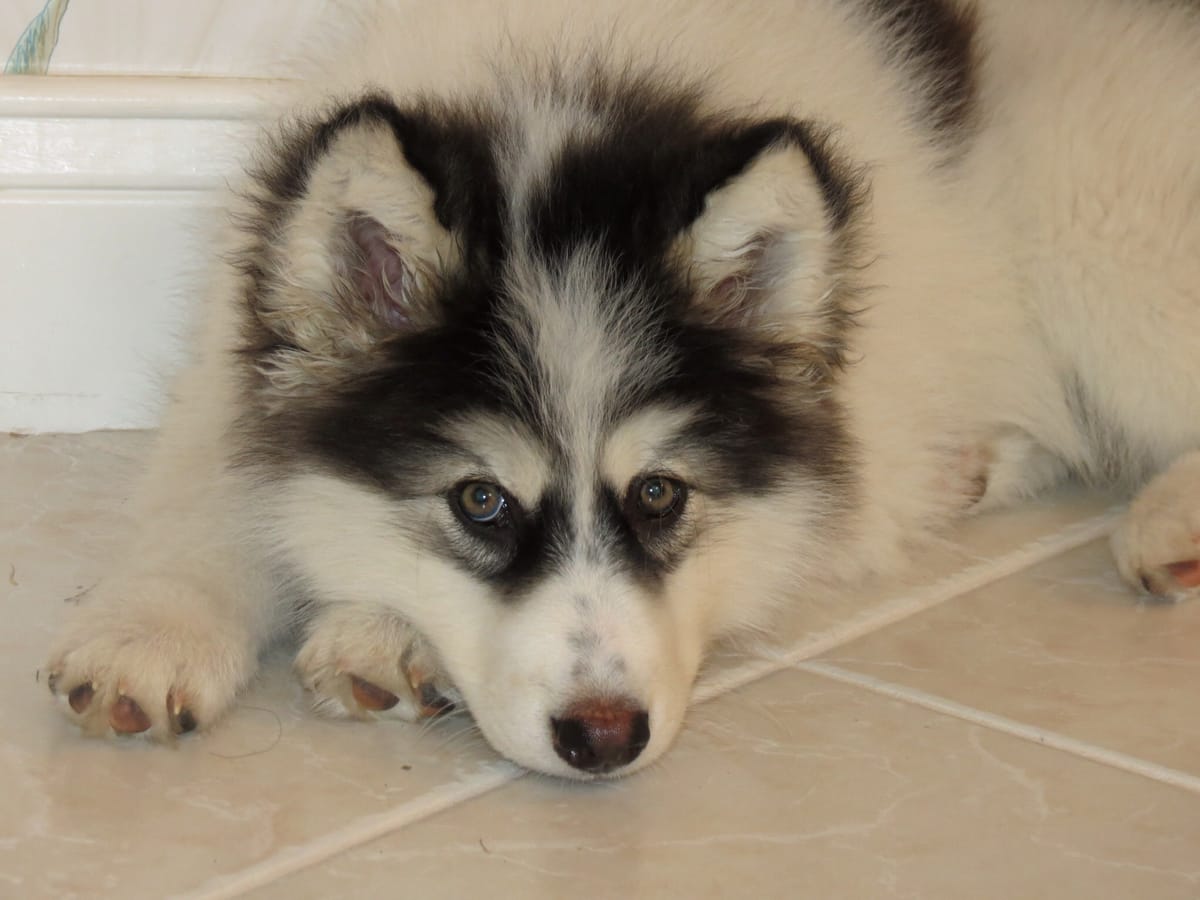
Conservation Efforts
Challenges Faced
The road to conserving Native American Indian Dogs and their breeds is fraught with challenges that stem from a complex blend of historical and contemporary issues. The rampant interbreeding with European dog breeds has diluted the genetic integrity of the original American Indian Dogs. Also, the legacy of colonization has left many Indigenous communities grappling with issues of identity and belonging, which extends to their relationships with dogs.
Some notable challenges include:
- Cultural Erosion: Traditional breeding and care practices are fading, leading to a loss of knowledge passed down through generations.
- Health Concerns: Many dogs face health issues due to neglect and environmental stressors, particularly in harsher climates.
- Resource Limitations: Indigenous communities often lack the financial means to invest in veterinary care and support services for their dogs.
Preservation Initiatives
Despite these hurdles, numerous initiatives are emerging to preserve the bonds between Indigenous communities and their canine companions. Organizations are actively working to reclaim and highlight the significance of reservation dogs through respectful collaborations.
Key preservation strategies include:
- Community Engagement: Local leaders and elders are being involved in conversations to ensure culturally relevant approaches.
- Veterinary Outreach: Mobile clinics are being established to provide essential veterinary services in remote areas.
- Advocacy and Education: Efforts are underway to educate both community members and outsiders about the importance of Native American Indian Dogs and the experiences of reservation dogs.
Through these concerted efforts, there is a growing movement to safeguard the legacy of these remarkable animals while fostering stronger ties between Indigenous communities and their beloved dogs.
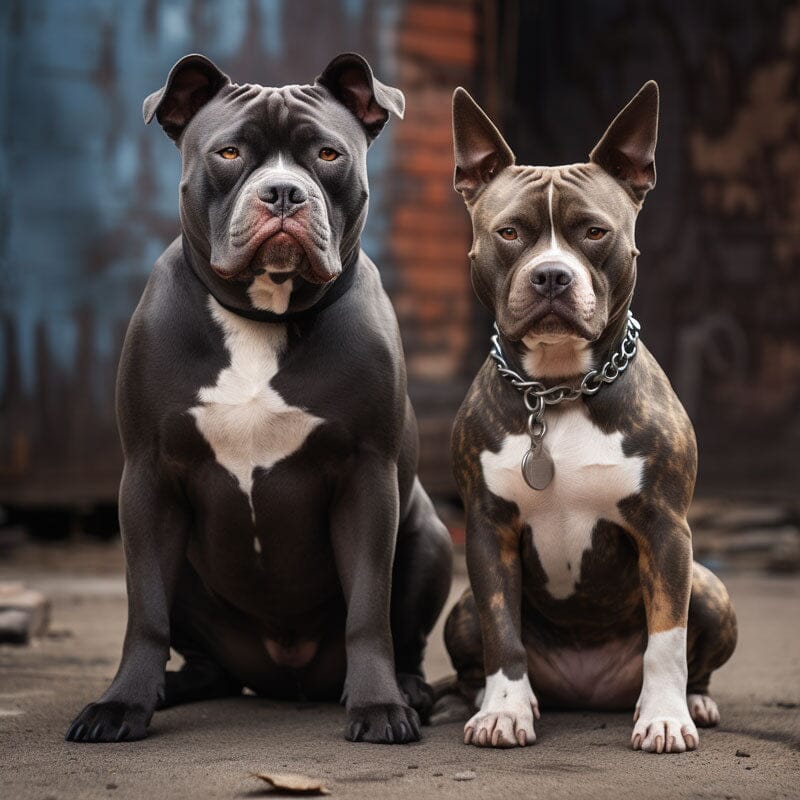
Health and Care Considerations
Common Health Issues
Like all breeds, the American Indian Dog (NAID) has its share of health concerns that owners should be mindful of. Given their unique lineage and living conditions, these dogs can be prone to specific health issues, including:
- Hip Dysplasia: A common condition in many breeds, it can lead to arthritis and mobility issues.
- Skin Disorders: Given their thick coats, they may experience problems with skin infections or allergies.
- Obesity: With their high intelligence and energy levels, it’s vital to monitor their diet and exercise to prevent weight-related issues.
Many owners find that regular veterinary visits and blood work are essential tools for spotting potential problems early.
Tips for Proper Care
Caring for an American Indian Dog involves a commitment to their physical and emotional well-being. Here are some tips to ensure your NAID thrives:
- Regular Exercise: They require daily activity to keep them physically fit and mentally stimulated. Activities like hiking, playing fetch, or agility training work wonders.
- Healthy Diet: Provide high-quality dog food that suits their nutritional needs, focusing on lean proteins and healthy fats.
- Grooming: Regular brushing helps manage their thick coat while keeping it clean and reducing shedding.
By paying attention to their unique needs and maintaining a supportive environment, your American Indian Dog can enjoy a long, healthy life filled with happiness and adventure.
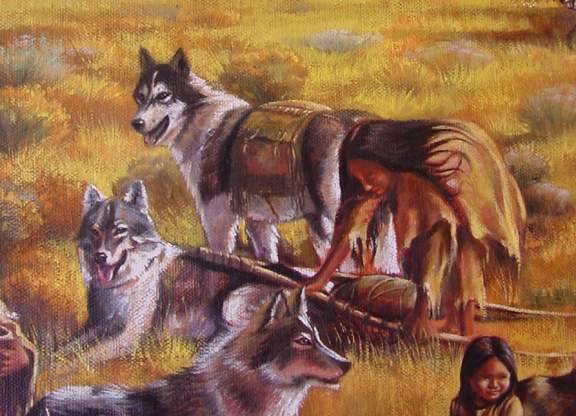
Native American Indian Dogs in Today’s Society
Companion Animals
In today’s world, Native American Indian Dogs (NAIDs) are increasingly becoming cherished companions among dog lovers. Their deep-rooted connection to Indigenous cultures provides a unique narrative that appeals to many pet owners seeking meaningful relationships with their animals.
- Loyal Companionship: Known for their loyalty and protective nature, they make ideal family pets. Many owners describe their NAIDs as integral family members, forming strong emotional bonds that enhance the household dynamic.
- Gentle Temperament: Thanks to their friendly and intelligent demeanor, these dogs are great with children, often fostering a sense of safety and companionship.
For many, adopting a NAID is more than just welcoming a pet; it’s an avenue to honor Indigenous culture and history.
Activities and Sports Involvement
Beyond companionship, NAIDs excel in various activities and sports, showcasing their agility and intelligence.
- Agility Trials: Their athletic build allows them to compete successfully in agility competitions, navigating obstacle courses with agility.
- Hiking Partners: Many owners take advantage of the breed’s endurance by hiking in nature, where these dogs thrive in outdoor settings.
- Therapy Dogs: Their gentle nature also makes them suitable for therapy work, providing comfort to those in need.
These dogs not only enrich the lives of their owners but also actively participate in activities that bolster their health and well-being, paving the way for a new generation of canine companions grounded in rich heritage.
Popularity and Recognition
Rise in Popularity
The American Indian Dog (NAID) has seen a resurgence in popularity as communities and individuals seek to reconnect with the breed’s rich heritage. Once on the brink of extinction, dedicated efforts to revitalize this ancient breed have gained momentum, attracting dog enthusiasts who appreciate its historical significance.
- Cultural Appeal: Many are drawn to the breed’s connection to Native American history, valuing the companionship and loyalty that NAIDs offer.
- Social Media Influence: Platforms showcasing NAIDs have helped elevate awareness, with pet owners sharing their stories and experiences, making these dogs more visible and desirable.
As a result, events honoring Indigenous culture that include dog shows or exhibitions has further heightened interest in the breed.
Recognition by Kennel Clubs
While the American Indian Dog is not yet recognized by major kennel clubs like the AKC, some breed organizations are working towards official recognition. These groups promote responsible breeding practices and preserve the dog’s lineage, aiming to ensure the breed continues to thrive in modern society.
Advocates hope that increased recognition from kennel clubs will not only affirm the breed’s unique qualities but also encourage more people to consider bringing a NAID into their homes, thus fostering a new era of appreciation and connection to this ancient canine companion.
Future Prospects and Trends
Changing Perceptions
The Native American Indian Dog (NAID) is gaining newfound recognition as a beloved breed that embodies rich history and loyalty. As interest in unique and culturally significant dog breeds grows, attitudes towards the NAID are evolving.
- Cultural Appreciation: More people are seeking to understand the connection between the breed and Indigenous cultures, valuing its role as a historical companion to Native Americans.
- Social Media Influence: Enhanced visibility through social media platforms allows owners to share their experiences, showcasing the breed’s intelligence and affectionate nature, which helps attract potential adopters.
For example, stories highlighting the NAID’s unique traits and heritage capture the hearts of dog lovers seeking a meaningful companionship.
Potential Developments
Looking ahead, there are promising developments on the horizon for the NAID.
- Increased Breeder Involvement: More conscientious breeders are emerging, focusing on preserving the breed’s unique characteristics while ensuring health and genetic integrity.
- Advocacy for Recognition: Advocacy groups are working tirelessly to gain recognition from major kennel clubs, which could lead to increased visibility and demand.
With continued efforts to educate the public and promote responsible ownership, the Native American Indian Dog may soon find its place as a beloved and recognized breed in households across the country.
Conclusion
Recap of Key Points
Throughout this exploration of the Native American Indian Dog, we’ve uncovered a wealth of fascinating insights. This ancient breed, believed to have formed a bond with early Native Americans over 30,000 years ago, has played a crucial role in tribal life—serving as a companion for hunting, guarding, and providing emotional support.
Key points include:
- Unique Characteristics: Known for their wolf-like appearance, intelligence, and loving temperament, NAIDs are versatile dogs that thrive in active households.
- Historical Significance: They symbolize a deep connection to Native American culture, reflecting the history and traditions that surround them.
- Conservation Efforts: Despite past struggles for survival, dedicated breeders and advocates are working to preserve this remarkable breed for future generations.
Final Insights
In a world where breeds come and go, the resurgence of the Native American Indian Dog reminds us of the importance of heritage and the bonds we share with our pets. These dogs serve as living links to the past and exemplify the enduring partnership between humans and animals. For anyone considering a canine companion, the NAID may offer a unique blend of history, loyalty, and charm—a true treasure for those who appreciate their rich legacy. Embracing this breed not only enriches your life but promotes the preservation of a vital piece of Indigenous culture.

Leave a Reply